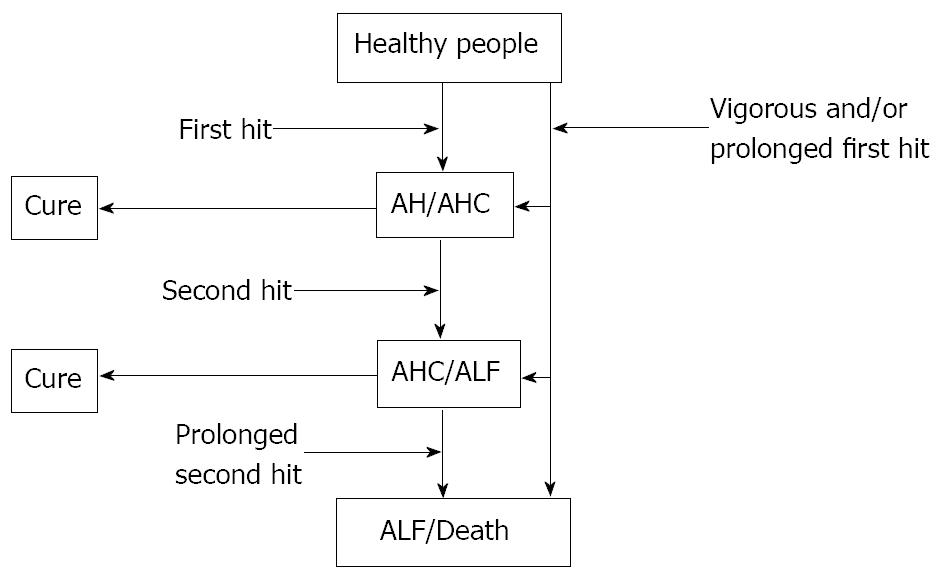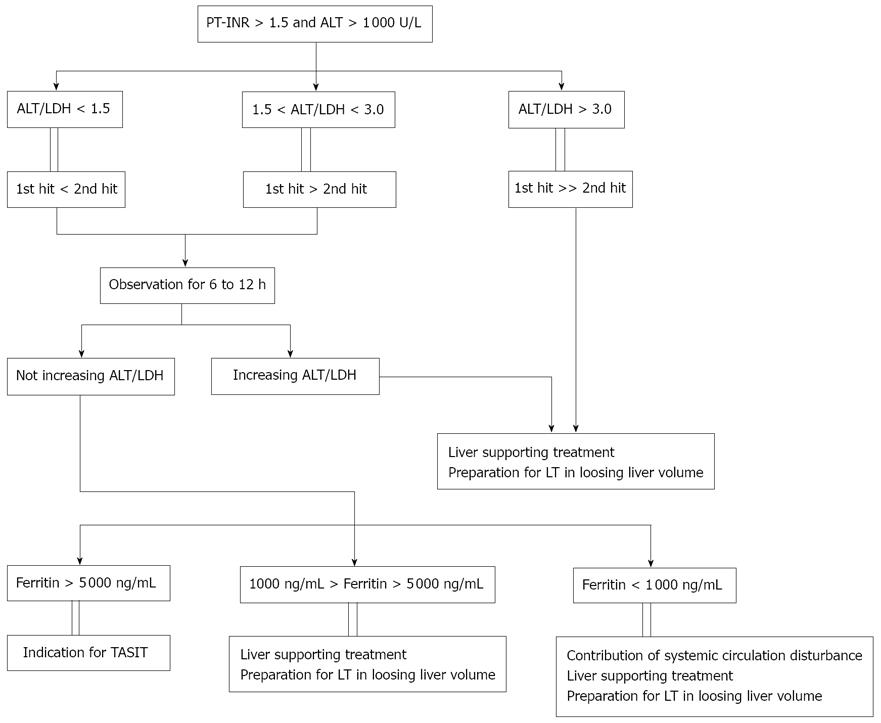Copyright
©2010 Baishideng Publishing Group Co.
World J Hepatol. Nov 27, 2010; 2(11): 395-400
Published online Nov 27, 2010. doi: 10.4254/wjh.v2.i11.395
Published online Nov 27, 2010. doi: 10.4254/wjh.v2.i11.395
Figure 1 Overview of acute liver failure.
Various triggers may directly harm the hepatocytes as a first hit, although this is usually not strong enough to lead to acute liver failure (ALF). In some patients who experience a first hit, over-activation of macrophages occurs in the liver as a second hit which leads to microcirculatory disturbances in the liver and massive hepatocyte death. The activated macrophages spontaneously decline in some patients but, if this activity is prolonged, the risk of death is substantially increased. Overall, the degree of liver damage is determined by the sum of the first and second hit. AH: acute hepatitis; AHC: acute hepatitis with coagulopathy.
Figure 2 A method to classify patients with acute liver failure (acute liver injury) based on the grade of intrahepatic macrophage activation.
First, patients are classified by their alanine aminotransferase (ALT)/lactate dehydrogenase (LDH) ratio which indicates the degree of hypoxia in liver. When a patient has a high serum concentration of LDH compared with that of ALT, the extent of the involvement of macrophage activation is estimated by the serum ferritin concentration. TASIT: transcatheter arterial steroid injection therapy. PT: prothrombin time; LT: liver transplantation.
- Citation: Kotoh K, Kato M, Kohjima M, Nakamuta M, Enjoji M. A new treatment strategy for acute liver failure. World J Hepatol 2010; 2(11): 395-400
- URL: https://www.wjgnet.com/1948-5182/full/v2/i11/395.htm
- DOI: https://dx.doi.org/10.4254/wjh.v2.i11.395










